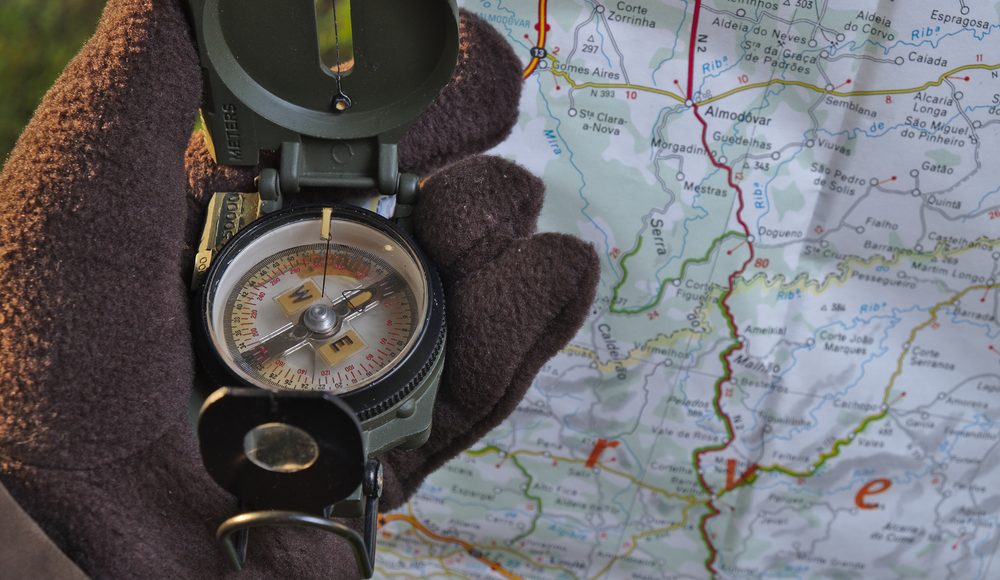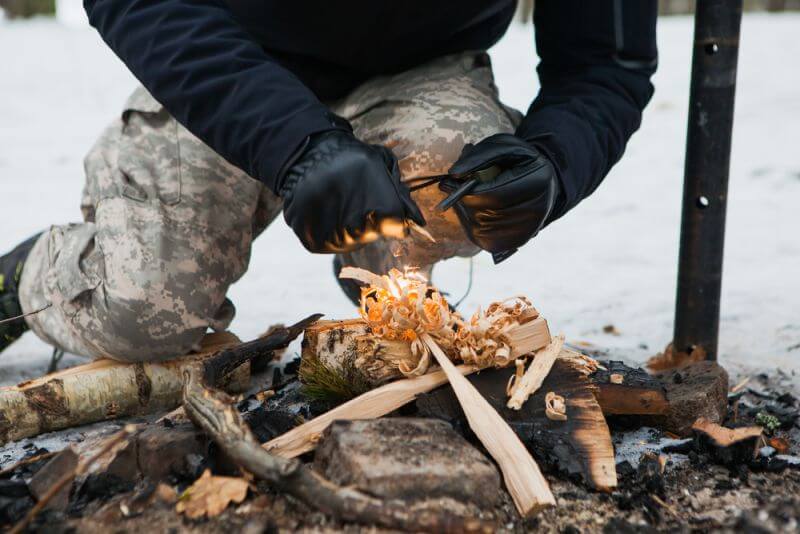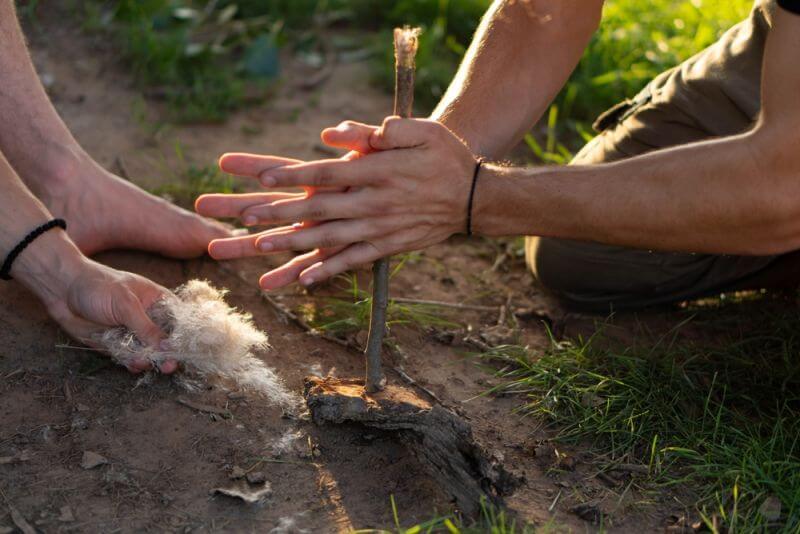The great football coach of the Green Bay Packers, Vince Lombardi, was known for this. At the beginning of summer camp, during his second year as head coach for the Packers, Lombardi when into the locker room with a football in his hand and told his team of professional ballplayers, “Gentlemen, this is a football.”
Did Lombardi think that his team didn’t know what a football was? No. Lombardi knew that for the big things to come together and work, you have to start with the fundamentals, the little things that everyone assumes are common knowledge but are often overlooked. By his constant attention to detail, going back to the basics repeatedly, Lombardi built a legendary team that won five NFL Championships in seven years.
Just like Lombardi, we need to build a winning team. It’s just that the team we’re building has to win at the most challenging game there is. There’s no rematch, and if we lose, there’s no game next week. The prize is survival, and the cost of losing is too much to pay. So we can’t afford to assume anything, and we can’t lose sight of the fundamentals. Some of these might surprise you.
For us, the fundamentals are a combination of knowing what our survival priorities are and how to meet those priorities. We obviously can’t complete the second of those without understanding the first, so let’s review that quickly.
- Our number one survival priority is oxygen; we can only live minutes without it.
- After that, we need to maintain our body’s core temperature. That mostly means avoiding hypothermia. To do that requires a combination of shelter, heating (fire), and clothing, as well as keeping that clothing dry – wet clothes don’t insulate). Hypothermia can kill in 15 to 30 minutes.
- Clean water comes next, as our bodies can only survive three to five days without it. However, we usually stick to the three-day side because making it to five days without water requires controlling the environment to the extent that we can’t do in a survival situation.
- Long after we might die of dehydration, there’s the risk of dying from starvation. The average American can survive from 30 to 100 days without food, depending on whose figures we use. But again, like with water, we must err on the side of caution. Besides, lack of food will affect both our energy levels and our cognitive ability.
- While those are the priorities that everyone talks about, we must add two things to the list: first-aid and self-defense. While we wouldn’t need either of those in an ideal situation, we can’t expect the situation we find ourselves in to be ideal. Lack of knowledge in either of these areas could kill us nearly instantly.
If we’re going to talk fundamentals, they must support one of those priorities in some way or another.
Learning blacksmithing might be great for a long-term survival situation where we need to e part of rebuilding society, but it’s not a fundamental survival skill. It would have to be considered an advanced skill. The same can be said for a long list of other valuable skills. But for right now, we’re going with Lombardi’s system and sticking to the fundamentals. That alone is a rather long list when you get down to it.
In reality, we should constantly be practicing these techniques, adding to our list of available skills. Looking for ways to apply your survival skills to everyday tasks can help you get more practice and save time on that practice. Many of our survival skills dovetail nicely with things that we do all the time, like starting a fire in the barbecue grille.
The list below may not be complete for your situation, as we face different climates and survival situations. But it should work pretty well as a basis to start with. Feel free to add whatever you want and to share that in the comments below.
Oxygen
There’s very little we can do about oxygen or the lack thereof. Should the world run out of oxygen, there’s not much any of us can do to survive. But we might find ourselves in a place where the air we breathe is dangerous or where the fire pulls the oxygen out of the air.
- Making an air filtration mask from available materials (think activated carbon)
- Where to find breathable air during a fire
- Gas masks and respirators, when to use them, and how to use them properly (including types of filters)
Maintaining Our Body Temperature
When we talk about maintaining our body temperature, we usually talk about keeping warm. But we must also consider cooling ourselves so that we don’t get heatstroke, especially if we live in a hot climate.
- Building a fire
- Starting a fire (the more methods, the better)
- Starting a fire in wet weather, including protecting that fire from wind and rain
- Finding dry wood amid a storm
- Getting the most benefit out of the fire
- What to do for fire when you’re not in the woods
- Making a variety of survival shelters out of available materials
- Finding refuge in the wild
- What to make a shelter out of when you’re not in the woods
- Keeping dry when it’s raining (What can you improvise a rain poncho from?)
- How to properly layer clothing
- Natural cooling techniques when it’s hot, and there’s no air conditioning
- Finding shelter in the wild
- What in nature can be used for cordage?
- Making clothing
- Tanning hides to make leather
- Making rawhide (excellent for shoe soles and cordage)
- Constructing or repairing shoes or some other foot protection
- Making fire starters and tinder
- Felling a tree and converting it into helpful wood
- Building a log cabin (at least in theory, if not from experience)
Clean Water
Once upon a time, we could safely drink naturally occurring groundwater, but no more. There is no water anywhere, which we can consider being safe to drink. Safe, of course, means free from microscopic pathogens, the things that can make us sick. Finding and purifying water is a constant, daily requirement in a survival situation.
- Finding water in urban areas
- Finding water in the wild
- Finding underground water in the wild
- Making a bio-filter
- Water purification techniques (the more, the merrier)
- Creating a rainwater capture system for use at home
- Creating an improvised rainwater capture system for use wherever
- Making a solar still
- Getting water from plants
- How to dig a well
Food
We all expect to live off our stockpiles or grow our food. Those are good options and should be part of what we do, but we shouldn’t limit ourselves to those possibilities. What will we do when our stockpile runs out, and we’ve had a time of drought? We need options that will work in those times too.
- How to package food for long-term storage
- Food preservation techniques include canning, dehydrating, smoking, and curing
- Hunting – both large and small game
- Making snares and traps from available materials in nature (this has to include baiting the snares and knowing where to put them)
- Skinning and butchering animals and birds
- Fishing
- Alternate fishing techniques (fish spear, set lines)
- Making fish traps
- Edible plant identification
- Alternative means of cooking (over the fire, solar, alternate cookware, etc.)
- Using seasonings to make unpalatable foods taste good
- Gardening
- Pruning trees for maximum yield
- Composting
- Natural pest control for your garden
- Animal husbandry
First-Aid
Injuries and illness are severe problems in any survival situation. We have become so accustomed to having a huge medical industry to help keep us well, but that probably won’t exist in a time of crisis. Even if it does, it will be seriously overworked, dealing with shortages of critical supplies and hard to get to without gas for our vehicles. The only medical attention that family members may be able to receive what we can give them.
- Basic first-aid
- Setting broken bones
- Disease and symptom recognition (this one’s tricky)
- Proper use of antibiotics
- Essential herbal medicine, especially natural antibiotics
- Alternative first-aid materials and how to make them safe to use
- Treating a sucking chest wound
- CPR
- Treating an injury with spurting blood (using a tourniquet, packing a wound, etc.)
- Cleaning debris out of a wound
- Building an outhouse or privy
- Natural pest control (pests can carry disease)
- Avoiding spreading disease (what would we do without masks and hand cleaner?)
- Bathing with minimal water
Self-Defense
While it would be hoped that we could all make it through any survival situation we encounter without the need to defend ourselves; that’s not something we can count on. as long as there are people, there will be bad people, as well as people who usually are good, but will do bad things when necessary for survival. It’s incredible what a hungry child will motivate people to do. So we’ve got to be ready to defend ourselves, just in case.
- Shooting accurately
- Tactical movement and shooting
- Establishing a defensive perimeter
- Group defense while moving
- Basic infantry tactics
- How to secure your home
- Using a variety of alternate weapons
- Making primitive weapons from whatever is available
Wilderness Survival
While I have mentioned a few things in the areas above that apply directly to wilderness survival, other necessary skills should be considered.
- Map reading and navigation
- How to transverse a variety of obstacles (crossing rivers, ravines, cliff faces, etc.)
- Setting up a camp (comfort, warmth, defense, and hygiene)
- Marking your trail (so you can be found or find your way out)
- Communications and signaling to call for help (signal mirror, whistle, etc.)
- Moving through the snow with minimal effort
Just Useful Skills
While these skills don’t apply to any of the categories above, they are valuable skills that will help you in a variety of survival situations, as well as in your day-to-day life.
- General carpentry and woodworking
- Mechanical repair (both vehicles and other devices)
- Moving stealthily while remaining hidden
- Becoming the “grey man.”
Building Your Skills
Hopefully, you already know all the skills on this list, but I’d just about bet that there are a few you don’t know. That’s okay; I’ve been at this for many years, and I’m still learning too. Some of these are things that we will need to keep learning just because of our changing circumstances. Others have so many aspects to them that we might never reach the end. The point is to keep working on improving the skills that we do have while continuing to learn new ones.
Keeping a list like this in your prepping notebook can be helpful, allowing you to check off learning new skills and reminding you of things that you need to review. As you go, you will probably find yourself adding to the list, including items particular to your needs or that of your family. Just because I didn’t mention something doesn’t mean that you don’t need to know it. Remember, I’m working on fundamentals here, not every skill that exists. It only makes sense that you would end up adding some specific skills that you find you need.
Fortunately for us, there’s a wealth of information available on the internet. You can find articles and videos teaching how to do everything on this list. Back when I started in survival, the internet didn’t even exist, let alone all the information that is stored there now. Before we could learn anything, we had to find the knowledge to know.










Johan Smit | September 8, 2021
|
Please Bill, write about anesthesia after shtf.
I have read that Quickstart, fordiesel engines asbought from auto stores can put you safely out because it is ether. That is fine for major work like setting broken bones or removing bullets, but what about minor operatins where you only want to deaden the skin to remove a local foreign object?
Please help, and thank you for your advice.
Best Regards
Johan Smit
radarphos | September 8, 2021
|
My opinion is that most Americans do not have a pre-determined Bug-out retreat location, nor close-by relatives or friends, readily available in an emergency moment. If one is forced by social chaos to head for the hills, even with navigation equipment in a go-bag, one needs to learn how to draw “their own maps” about where they were, prominent landmarks and unique features in areas they sleep or camp overnight (or longer). Why? Because you may come upon a danger and need to retreat to a former camp site that would be preferable to wandering in some direction and essentially getting lost.
Many college students, for example, are hundreds of miles away from home and relatives. If they are forced into the boonies, maybe with a friend or two, they will be better served understanding community and rural map navigation; and knowing how to draw their own maps representing camp sites they stayed at (where they were, what worked, resources nearby: safe-place, foods, edibles, water, etc. One may chose (or wish) to return along the same route, but topo maps and city maps do not contain “camp-ground” like info about safety features, hiding places, edibles, water, dumps that may contain resources (edge materials, metal like rebar for a heavy stick), etc.
To the best of my awareness there is no one way to draw one’s own maps, unless possibly one recognizes a great camping place, and then has “pre-cut” 50-foot length of paracord to use to measure distances from landmarks (even those you may make by notching a noticeable tree, or setting up a small configuration of stones). Learning how to count your paces (Left foot, right foot, left foot.Stop!=1 pace) is important and on flats, as well as up a gentle hill, and up a steep hill; and down again for approximating how much distance you traveled. Use “ranger beads” to keep track of your paces (or at least know how to do it).
At the outset of leaving, one may learn quickly that they brought “good stuff”, but good stuff rarely used that is too heavy to carry. Where are you going to hide it, if you want to retrieve it? And how will you remember where you put it, when with every step you take you are not noticing features around you (because you are scared, hungry, or it is getting dark or foggy, or you got to pee but feel exposed? I use small-case letters (“a, b, c”) on a topo map that correspond to a graph paper map, where one pin-points details (landmarks, what buried or found, and length of cord measures, and use the same small case letter corresponding to the topo-map, but with a number added to my micro-notes and/or man-made maps. The numbers I use are: 1, for a good hiding place; 2 for an plant edible, 3 for a water or food source (an old grove); 4 for resources (dumps); 5, for observation sights pre-moving to next section; 6, for dogs barking when I am too close to homes or farms; 7, for too many people in area; 8, for bird calls because they are signaling my presence; 9, for obstacles (and I add it to other numbers, such as “9.3” for difficult to obtain water at a fishing site) and probably because the slope to water is too steep. One could have a whole separate number of 9s for steep slopes, briar patches, dangerous animals or snakes, even rural Internment Camps, etc.
But it is crucial to also know how to draw one’s own maps and with a consistent way of informing yourself about where you have been that will help you recall important features, should you decide to return along the same route that you fled along (that may be the safest route).
One can determine how important and difficult this is by going to an “out-laying” park and hopping any fence to examine the adjoining woods around the park or beyond. Practice close at home, over and over again until you create a system that makes sense to you. Imagine yourself being 10-years old and investigating (with a man-made pirate map) what is nearby, then jot it down, then evaluate whether your method of writing info works or doesn’t work for you.
Indians, Mineral Miners, fur trappers and others have done this for hundreds of years—made their own maps; and often “leaving the maps they made” at a landmark, so that when they visited their landmark they had access to their notes. How? Often scribing (and hiding) an animal leather hide (but we have paper and plastic bags today), or etching a note on a large rock or tree branch or trunk, and even wedging a stick into the “branch out crotch of a large tree” that points in the direction to go (when revisiting a site).
What a regret it could be to forget the route you took when you began your journey, and on the way back; and to forget the old orchard you passed when you first embarked; and forget a natural pond just 100 feet off your trail. All across the mid-west country there are deer almost everywhere; and they find water (even in huge cities in the NE USA). Wherever they find water, you might; but it will be refound better with you drawing your own maps. Some topo maps may show an intermittent stream, but not a hazardous small intermittent swamp, nor quick-sand. You may know wolves, big cats or bear are in an area; but a topo map will not show that. If you see a bear, add another number to your “9 category” made-map indicating hazardous animals”. And if you see water nearby, that does not imply that it will be easy to access. Anything inaccessible or hard to access may need its own number (like another 9 or an 11). If you have young kids or anyone vulnerable with you, you will want to know where land dangers exist. Topo maps may show some dangers (like cliffs), but not all dangers (your map needs to note where all hazards are on the route you took, that may be the route you pick for returning).
radarphos | September 8, 2021
|
This is an add on to my comment above (from Radarphos): Keep in mind, when you are really on the run, that there will never be enough time to do all that you would prefer to accomplish. This is another reason why creating your own maps, buys you tremendous time, if you return along the same route for meeting desperate needs. And again, Why? Because you have your own map, in your own codes, with what resources are present and at approximate distances away from where you are standing as you examine your “notes-map”.
I envision my use of time as amounting to half a day for travel and half a day for re-supply. Period (and because it takes time to build a fire, collect fire wood, set up a bed, but also preserve food along the way or eat it. So, it is important to me to be at a safe location, to find resources (foods, water, etc.) then to resupply my resources and sleep well to start my next half-day of travel and half-day of resupply. Certainly not every day will be a good day, but if I need to “go back, one day” to reconfigure my route at least I know where Mother Nature has delivered me worthwhile supplies (I mapped it on my own map-making maps)..
Kate Bloodworth | September 8, 2021
|
Have been working at dehydrating nutritious food for the past 2 months and am making great progress. Some we purchased and some I made. What I am most worried about is that I am bedbound and cannot sit up more than 30 minutes without the use of narcotics. I have been trying to cheat and save an extra 15-20 pills a month but it is hard. I live alone and have just me and my service dog so would have to hunker down in house. Am armed and not afraid to use it and dog can be vicious if she has too and will protect me at all costs. I have purchased extra food for her and continue to store staples and food and first aid and my required daily meds and IV materials, but I am really worried because I am alone and cannot walk out or drive out of my situation. Any thoughts??
Butch 2 | November 9, 2021
|
In a collapse, SHTF or financial , how can a diabetic who takes 12 units of insulin a day, survive if no insulin is available?
Gulo | November 12, 2021
|
You can’t
Susan | November 12, 2021
|
It seems that there are some plants/ herbs available for diabetics. Exercise is helpful too. If your family doctor is a DO (Doctor of Osteopathy?) They are familiar with alternative meds,therapies out there.
Kate Bloodworth | December 13, 2021
|
Really hard to do this when you cannot walk and are confined to bed or a wheelchair. But the ideas are great. Do have a final bugout plan when I can’t handle anymore. Have stored as much meds as I can.. With the recent tornadoes that ran through KY got to use my solar generator and was so grateful I had one. Also had gas logs in living room so closed this room off with drapes to keep heat in and layered blankets. But no way to stop the flooding rain from gutting my new basement. Clean up will take me months. Yeah we older and debilitated folks won’t last too long. Making sure my service dog has a place to go.